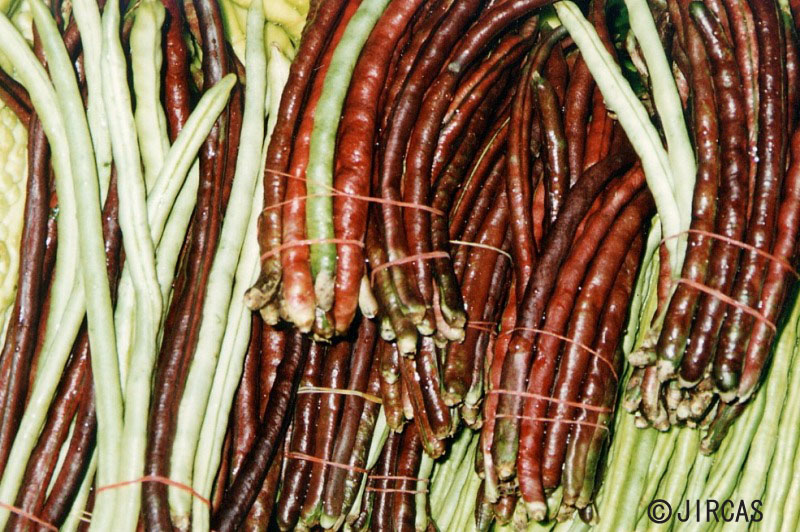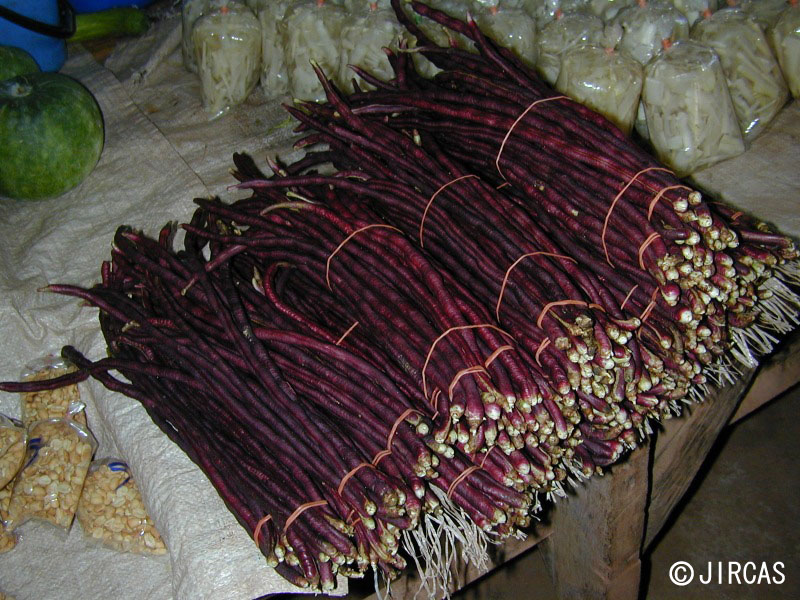Vigna unguiculata (L.) Walp (Fabaceae)
- Scientific name
- Vigna unguiculata (L.) Walp
- Family name
- Fabaceae (Syn. Leguminosae)
- Common name
- Yard-long bean, string bean (English); sasage (Japanease)
- Local name
- Thua rai, thua pee
Annual climber, up to 4 m long, or erect to suberect bush, nearly glabrous. Stems more or less square; stipules distinct, ovate. Leaves alternate, trifoliolate, with petiole up to 25 cm long; lateral leaflets opposite, asymmetrical with oblique base, terminal leaflet symmetrical, ovate. Inflorescence racemose, in leaf axils with several flowers clustered near the tip; peduncle c. 15 cm long; bracts 1 per flower, early caducous; pedicel short. Calyx bell-shaped, lobes c. 6 mm long. Corolla with erect or spreading standard, c. 3 cm long, hood-shaped when older, wings c. 20 × 10 mm, keel-shaped, c. 20 x 10 mm. Stamens 10, diadelphous. Ovary with up to 20 ovules. Fruit a long or short pod, pendant or erect to spreading, linear, c.10–100 cm long. Seeds variable in size and shape, square to oblong, variously coloured.
Several local landraces of subspecies cylindrica and sesquipedalis are occasionally planted in intercropping systems along with other field crops such as tapioca. Wide variation in pod size, colour, and length, as well as seed colour is observed among these local landraces. Propagated by direct seeding in the field during the early or mid-rainy season; typically allowed to climbing over the main crop.
Young pods are harvested at the end of the rainy season and cooked in curries or fried in dishes such as phat phrik kaeng moo (stir-fried pork with spicy sauce), or eaten raw as a side dish with other hot and spicy foods.
Young pods are harvested at the end of the rainy season and cooked in curries or fried in dishes such as phat phrik kaeng moo (stir-fried pork with spicy sauce), or eaten raw as a side dish with other hot and spicy foods.





